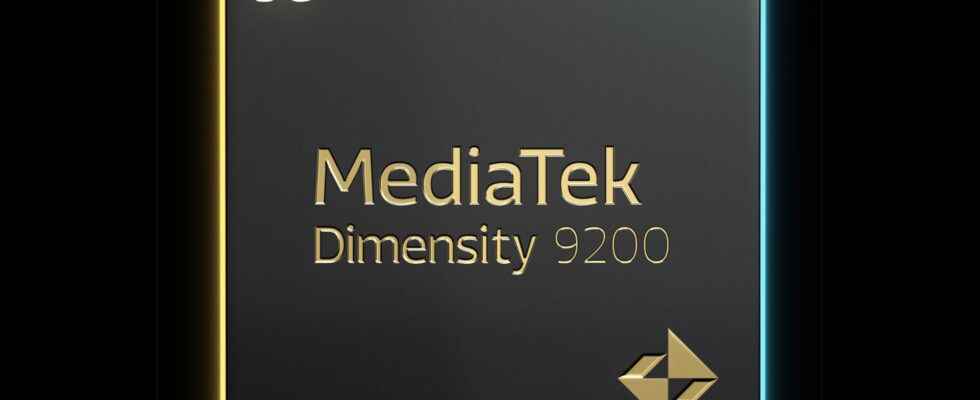MediaTek launches its Dimensity 9200, its most high-end chip that could overshadow the competition.
The first benchmarks of the Dimensity 9200 chip suggested good performance, and the SoC has just been officially announced by MediaTek.
The first Wi-Fi 7 SoC
The Dimensity 9200 is aimed at the high end and should serve as a convincing alternative to Qualcomm’s Snapdragon 8 Gen 2, which is expected to be presented in mid-November. It is the first SoC on the market to support the Wi-Fi 7 standard which offers speeds of up to 6.5 Gbps. Of course, you will need a compatible router to take advantage of the potential of Wi-Fi 7, which will not be democratized for years. But users at least ensure that their smartphone equipped with a Dimensity 9200 is a long-term solution on this point.
MediaTek’s chip also adopts a new architecture, ARMv9 Gen 2. This consists of the presence of a very powerful Cortex-X3 core for the most resource-intensive processes, combined with 3 Cortex-A715 performance cores. and 4 low-power Cortex-A510 cores.
If the performance gain is not exceptional compared to the Dimensity 9000 (between 10 and 12%), energy consumption would be reduced by up to 25%, suggesting better autonomy for smartphones.
A ray tracing compatible GPU
But it is above all at the level of the GPU that the Dimensity 9200 stands out. It features ARM’s new Immortalis-G715, which supports ray tracing, which is 32% faster and 41% less energy-consuming than the Dimensity 9000, according to MediaTek.
The Dimensity 9200 supports millimeter 5G while most chips are content with 5G on the 6 GHz frequency band. Its Imagiq 890 image processing processor promises brighter, more detailed photos, and the chip is compatible with UFS 4.0 storage technology, LPDDR5X RAM and 24-bit/192KHz audio.
MediaTek is no longer just a manufacturer of entry-level and mid-range SoCs, it is establishing itself as a safe bet in the premium segment. What push Qualcomm, Samsung, Google and Apple to their limits?
Source : Engadget

3